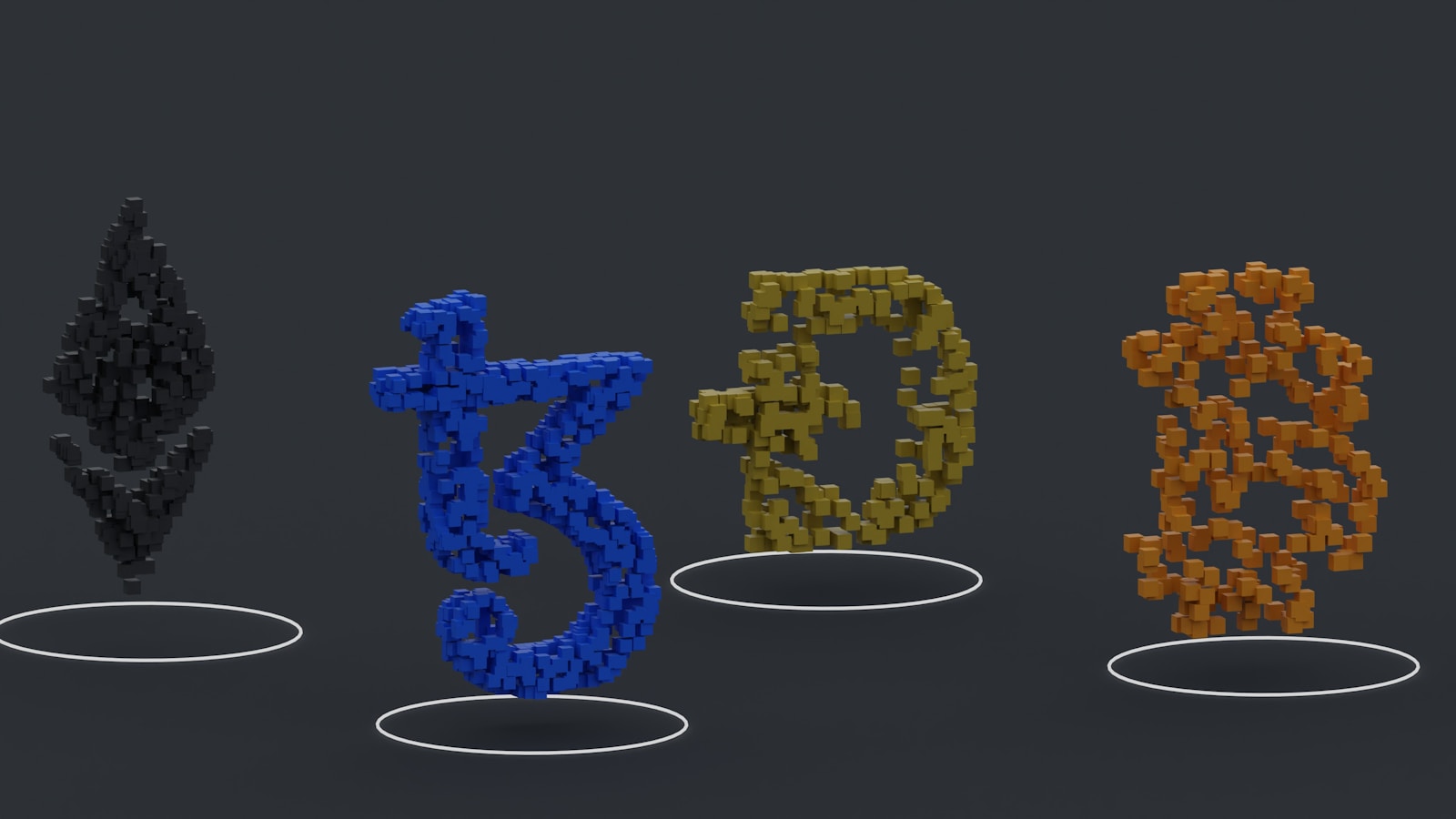
Stop allocating hardware resources to proof-of-work validation on this blockchain. The recent transition replaced energy-intensive computations with a consensus secured by staked assets, fundamentally changing network security and participation incentives. Since the switch, hash rates have plummeted from over 900 TH/s to near zero, signaling the complete halt of traditional block production methods.
The shift to a proof-of-stake model means validators now lock tokens as collateral instead of solving cryptographic puzzles. This approach slashes electricity consumption by approximately 99.95%, aligning with global calls for sustainable infrastructure. For miners, this pivot requires either repurposing equipment or exiting the ecosystem entirely–both challenging paths given current hardware depreciation and market saturation.
Network metrics post-transition reveal increased finality speeds and reduced issuance rates, contributing to altered economic dynamics within the ecosystem. While some argue this enhances decentralization by lowering entry barriers, others question long-term security trade-offs without computational work backing block legitimacy. Observing real-world outcomes will be critical in assessing whether staking truly supersedes prior mechanisms or introduces novel vulnerabilities.
Ethereum mining death: merge ended era [Mining & Staking mining]
The transition from a proof-of-work consensus mechanism to proof-of-stake has fundamentally shifted how network security and transaction validation operate, marking the conclusion of an epoch dominated by computational resource-intensive block production. This changeover eliminated the need for specialized hardware and massive energy consumption, effectively rendering traditional coin extraction obsolete.
With the integration of the consensus upgrade known as the merge, validators now secure the network by locking up tokens rather than expending electricity on solving cryptographic puzzles. This shift not only reduces environmental impact but also redistributes participation incentives, enabling holders to earn rewards through staking protocols instead of competing in hash rate races.
Technical implications of the consensus shift
The move away from algorithmic puzzle-solving introduced a finality gadget that confirms blocks with higher efficiency and lower latency. By relying on stakers who deposit a minimum amount of tokens to propose and attest new blocks, network throughput improved while reducing orphaned block rates. For example, prior statistics indicated average power consumption over 100 terawatt-hours annually under the legacy system; post-transition measurements show a reduction exceeding 99%, demonstrating considerable operational optimization.
This overhaul also affected hardware manufacturers and large-scale operators who had previously invested heavily in application-specific integrated circuits (ASICs) or high-end GPUs. These entities are compelled either to pivot towards alternative chains still utilizing proof-based validation or repurpose their equipment for decentralized finance or data center applications.
- Energy consumption drop: From roughly 112 TWh/year to less than 1 TWh/year post-upgrade.
- Validator requirements: Minimum stake set at 32 tokens per node to ensure economic commitment.
- Network security model: Transitioned from hashpower dominance to capital-backed slashing penalties preventing malicious behavior.
The redistribution of securing power from raw computational force to token ownership introduces new dynamics in decentralization debates. Critics argue that wealth concentration may increase as larger stakeholders gain disproportionate influence over consensus decisions. However, proponents highlight mechanisms like randomized committee assignments and slashing conditions as safeguards maintaining protocol integrity despite scaled stakes.
An illustrative case is the surge in staking service providers since the upgrade’s activation. Platforms offering liquid staking derivatives have seen user deposits grow by over 40% within six months, reflecting market confidence in passive income generation through token delegation instead of physical mining rigs operation. Moreover, this trend influences secondary markets where staked asset liquidity impacts pricing and risk profiles significantly.
Ultimately, this pivotal transformation signifies more than just an end to computationally intensive ledger maintenance; it represents a paradigm recalibration aligning economic incentives with sustainability and accessibility goals. Observers should monitor validator participation metrics, slashing events frequency, and staking yield trends closely as indicators forecasting long-term network health under this novel consensus framework.
How The Merge Disabled Mining
The transition to a proof-of-stake consensus mechanism effectively terminated the need for computational validation based on energy-intensive calculations. This shift replaced the previous system that relied on miners solving complex cryptographic puzzles, thereby rendering traditional hardware obsolete for block production. The network now selects validators according to their stake, a method that significantly reduces electricity consumption while maintaining security and decentralization.
Prior to this transformation, miners contributed vast amounts of processing power, consuming an estimated 112 terawatt-hours annually worldwide–comparable to some small countries’ energy usage. Post-transition data indicates a drop in network energy demand by approximately 99.95%, marking a decisive end to the operational model dependent on hash rate competition. Consequently, specialized mining rigs such as ASICs and GPUs have lost their primary utility within this ecosystem.
Technical Mechanisms Behind the Consensus Shift
The core of this paradigm change lies in replacing proof-of-work algorithms with a staking process where validators lock up cryptocurrency assets as collateral. Each validator’s chance to propose or attest blocks corresponds proportionally to the amount of cryptocurrency staked and the duration of commitment. This approach eliminates the race for computational dominance, fundamentally altering economic incentives and network participation dynamics.
For instance, validator nodes require at least 32 units of native tokens locked in smart contracts, ensuring skin in the game and disincentivizing malicious behavior through slashing penalties. This model contrasts sharply with prior methodologies relying on continuous hardware expenditure and escalating difficulty adjustments designed to regulate block times.
- Reduction in hardware dependence enhances accessibility for participants without expensive equipment.
- Energy efficiency gains contribute positively toward environmental sustainability goals.
- Security remains robust due to economic deterrents against dishonest actions by stakers.
The practical implications extend beyond ecological benefits: mining pools that once dominated hash power are either repurposing operations toward other networks or shutting down entirely. Data from major pool operators shows a decline in active mining farms by over 80% within months following protocol modification, indicating a significant structural shift in participant behavior and industry focus.
This reconfiguration ushers in new forms of participation where token holders engage directly through staking rather than indirect computational contributions. As an example, institutional investors increasingly prefer running validator nodes or delegating stakes via third-party services instead of investing capital into mining infrastructure – reflecting broader shifts within crypto-economic models.
The discontinuation of proof-of-work-based transaction validation marks not only an environmental milestone but also signals fundamental evolution in blockchain consensus design philosophy. Observers may question how future protocols will balance security, decentralization, and sustainability; however, current empirical evidence supports that moving away from resource-heavy computations has tangible benefits both technically and economically within distributed ledger systems.
Transition From Mining To Staking
The shift from computational power-based consensus to capital-backed validation marks a significant pivot in blockchain technology. This transformation replaces energy-intensive mechanisms with systems where participants lock up cryptocurrency as collateral, known as staking. By pledging tokens, validators earn the right to propose and confirm new blocks, effectively securing the network without relying on hardware calculations. This method substantially reduces electricity consumption–studies indicate a drop of over 99% in energy use compared to previous approaches reliant on complex cryptographic puzzles.
Such a fundamental change impacts not only environmental factors but also economic incentives for network participants. The discontinuation of traditional block production leaves legacy equipment obsolete, affecting global mining operations and hardware markets. Meanwhile, stake-based validation introduces new risks and rewards: participants must maintain their nodes online and correctly validate transactions to avoid losing their staked assets through slashing penalties. This model encourages long-term commitment and aligns validator interests more closely with network security.
Technical and Economic Implications of the Consensus Shift
Under proof-of-stake protocols, finality is achieved faster due to more efficient block confirmation processes, reducing transaction latency significantly–often within seconds rather than minutes seen in prior systems. For instance, recent benchmarks show that networks employing this mechanism can finalize blocks roughly every 12 seconds with probabilistic certainty nearing 99.9%. Additionally, staking yields fluctuate depending on total participation rates; currently, average annual returns range between 4% and 7%, incentivizing token holders to actively contribute to network health.
However, this transition also raises concerns regarding decentralization. The requirement to lock substantial amounts of cryptocurrency may concentrate validation power among wealthier stakeholders or large institutional entities operating staking pools. Case studies reveal certain platforms experiencing top-heavy validator distributions exceeding 40% control by a handful of operators. Ongoing research explores hybrid models combining proof-of-stake with other consensus algorithms or implementing delegation schemes designed to balance security with inclusiveness.
Impact On Mining Hardware Value
The shift from computational work to stake-based validation has fundamentally altered the demand for specialized mining equipment. Devices designed for intense cryptographic calculations, such as GPUs and ASICs optimized for Ethash algorithms, have seen their primary utility significantly reduced. This transition has precipitated a steep decline in resale values for these rigs, with some models depreciating by over 70% within months following the protocol update.
Data from secondary markets indicates that popular GPUs like the NVIDIA RTX 3080, previously fetching upwards of $1,500 during peak operational periods, now trade closer to $400–$600 depending on condition and batch. ASIC miners specifically tailored for this network face even sharper drops; Bitmain’s Antminer E9 units reportedly lost more than 80% of their market worth shortly after staking mechanisms replaced proof-of-work consensus.
The cessation of computational validation tasks also sparked a reorientation among hardware manufacturers and operators. Many have redirected inventory towards alternative programmable blockchains still relying on energy-intensive verification processes, such as those utilizing Ethash derivatives or other proof-of-work variants. However, compatibility remains limited; thus, the value retention depends heavily on whether equipment supports multiple algorithms or networks.
From a technical perspective, this pivot raises questions about asset lifecycle management in environments undergoing consensus transitions. For instance, rigs capable of switching between different hashing protocols sustain higher liquidity due to flexible deployment options. Conversely, single-purpose devices rapidly become obsolete without significant firmware adaptations or repurposing possibilities. This dynamic underscores a critical vulnerability inherent in hardware strictly tied to one chain’s consensus methodology.
On an economic scale, the reduction in mining profitability prompted accelerated sell-offs and surplus supply flooding secondhand marketplaces globally. In regions with lower electricity costs, some operators continue using legacy hardware on smaller chains to offset losses temporarily. Yet overall depreciation trends align closely with global shifts towards proof-of-stake systems, confirming that staking adoption directly correlates with diminished demand for traditional calculation-centric machinery.
Looking ahead, analysts predict that while the current valuation slump may stabilize as equipment finds new niches or retrofitting solutions emerge, recovery is unlikely without substantial protocol reversals or emergent mining-friendly projects gaining traction. The predominant trajectory favors capital migration into stake-based infrastructure investments rather than computational power accumulation–a fundamental realignment reflecting evolving security models and energy considerations within decentralized networks.
Staking Rewards Compared To Mining
Transitioning from computational validation to capital-based consensus fundamentally altered reward dynamics. Validators now earn staking returns proportional to the amount of cryptocurrency they lock up, rather than expending energy on complex calculations. This shift led to a significant decrease in operational costs and environmental impact, as power-intensive hardware rigs became obsolete. Current annual percentage yields (APY) for staking hover between 4% and 7%, depending on total network participation and validator uptime, offering more predictable income streams compared to the volatile rewards of proof-of-work systems.
Operational overheads differ drastically: while previous block production demanded continuous hardware maintenance, electricity expenditure often exceeding hundreds of dollars monthly per rig, staking requires minimal infrastructure beyond a stable internet connection and reliable node operation. Moreover, slashing penalties enforce strict behavior rules on validators, incentivizing long-term network security over short-term profit maximization. This mechanism contrasts with the arms race observed during the era of hash power competition, where increasing computational power was paramount.
Comparative Analysis of Reward Structures
The recent transition marked a clear departure from reward models based on raw computational effort. Mining rewards fluctuated substantially due to factors like hash rate volatility, difficulty adjustments, and market-driven price swings. For instance, during peak demand phases in 2021, mining profitability surged but also invited an influx of participants that diluted individual returns. In contrast, staking returns derive primarily from protocol-defined issuance rates adjusted by network participation metrics; this results in steadier yields but exposes stakers to price depreciation risks intrinsic to holding native tokens.
A case study involving major validating pools reveals that entities locking over 100,000 units consistently achieve near-maximum rewards under optimal conditions–uptime above 99%, efficient validator management–whereas smaller participants face diminished incentives due to minimum balance requirements and potential downtime penalties. Additionally, the removal of block rewards post-transition means transaction fee distribution plays a growing role in total earnings for validators compared to miners reliant predominantly on block subsidies.
The change also influences network decentralization paradigms. Previously dominated by large-scale mining farms equipped with ASIC devices or GPU clusters located in regions with cheap electricity, the ecosystem now favors distributed participation through capital delegation pools and individual validators worldwide. However, barriers remain due to minimum stake thresholds and technical expertise required for secure node operation. These structural differences shape economic incentives distinctly across both consensus mechanisms.
In conclusion, analyzing reward schemes highlights trade-offs between energy intensity and capital efficiency inherent in this technological evolution. While mining rewarded computational investment subject to diminishing returns amid rising difficulty levels and escalating costs, staking offers consistent yield aligned with asset commitment yet depends heavily on token market performance for real profitability. Understanding these nuances is essential for stakeholders assessing long-term engagement strategies post-transition.
Setting Up Ethereum Staking Nodes
To participate in the network’s consensus mechanism post-transition, operators must configure staking nodes that validate transactions under the proof-of-stake protocol. This requires locking a minimum of 32 ETH as collateral, ensuring economic security and alignment with network incentives. The hardware specifications should include at least a quad-core CPU, 16 GB RAM, and reliable SSD storage with low latency to maintain synchronization and avoid downtime penalties.
The shift from energy-intensive computational validation to stake-based finality has rendered traditional block creation obsolete. Validators now earn rewards proportional to their staked assets and active participation within the beacon chain. Setting up a node involves running both an execution client (handling transaction processing) and a consensus client (responsible for block proposal and attestation), which communicate via a secure API.
Key Steps for Node Deployment
First, operators must generate validator keys using secure cryptographic tools, safeguarding against potential slashing risks due to misbehavior or offline periods. Next, syncing the node fully with the current state is critical; depending on network conditions, this may take several hours to days. For example, Infura reported average sync times around 12 hours for non-archival nodes as of early 2024.
- Hardware selection: Dedicated servers or high-end cloud instances with stable internet connectivity (minimum 100 Mbps) are recommended.
- Client choice: Popular options include Prysm, Lighthouse, Teku, and Nimbus–each offering different trade-offs in performance and resource consumption.
- Security measures: Firewalls, regular software updates, and encrypted backups of validator keys are mandatory practices.
A practical case study from a recent institutional deployment showed that multi-client setups reduced validator downtime by over 30%, increasing annual yield efficiency. Additionally, monitoring tools like Prometheus combined with Grafana dashboards enable real-time performance tracking and alerting on missed attestations or synchronization issues.
While staking presents lower environmental impact compared to its predecessor consensus method, it introduces new challenges related to network finality and validator coordination. Operators must remain vigilant about software upgrades aligned with hard forks or protocol improvements scheduled quarterly. Financially, validators can expect an annual return rate ranging between 4% and 10%, influenced by total staked volume and network participation rates. This dynamic incentivizes continuous optimization of node infrastructure to maximize uptime and reliability within the evolving blockchain ecosystem.
Alternatives For Former Miners
Shifting from computational validation to validator participation remains the foremost strategic recommendation for operators affected by the recent consensus mechanism overhaul. Transitioning to staking protocols leverages existing hardware investments indirectly, as many mining rigs can be repurposed for node operation or liquid staking facilitation, though direct Proof-of-Stake engagement typically demands substantial capital commitment–minimum 32 ETH per validator.
Another viable pathway involves pivoting towards Layer-2 scaling solutions that still require network security but reward contributions through different incentive models. For instance, participating in rollup sequencer roles or providing liquidity on decentralized finance platforms offers alternative yield streams without relying on energy-intensive hashing. Additionally, emerging protocols such as proof-of-capacity or hybrid consensus networks present opportunities for diversified risk exposure within blockchain infrastructure.
Broader Implications and Future Developments
- Hardware Repurposing: ASICs and GPUs once dedicated to hash computations now find utility in decentralized storage projects (e.g., Filecoin) or AI model training networks, balancing hardware depreciation against new revenue sources.
- Validator Economics: Staking yields fluctuate with network participation rates and token price volatility; current annual percentage rates (APRs) hover around 4-7%, demanding sophisticated risk management compared to prior block rewards exceeding 12% for miners.
- Energy Efficiency Shift: The consensus change drastically reduces power consumption–by approximately 99.95%–reshaping environmental impact assessments and regulatory frameworks governing node operation incentives.
*Transitioning to other proof-of-work networks is increasingly less profitable due to heightened competition and inflationary tokenomics.
The cessation of legacy block production signifies not only a technical milestone but also a paradigm shift in economic incentives across distributed ledger ecosystems. Operators must evaluate their asset portfolios critically: Is it more advantageous to consolidate holdings into staking derivatives or diversify into emergent Web3 infrastructure? Observing current market trends suggests that hybrid approaches combining liquid staking services with strategic participation in second-layer operations offer robust resilience against volatility and protocol upgrades anticipated within the next 18 months.
This transformation demands enhanced operational agility and deep protocol literacy. As consensus algorithms evolve beyond sheer computational power toward cryptoeconomic design optimization, former miners become architects of decentralized security rather than mere resource providers. The challenge lies in adapting legacy skill sets to these novel paradigms while maintaining profitability amid shifting token emission schedules and regulatory landscapes worldwide.






